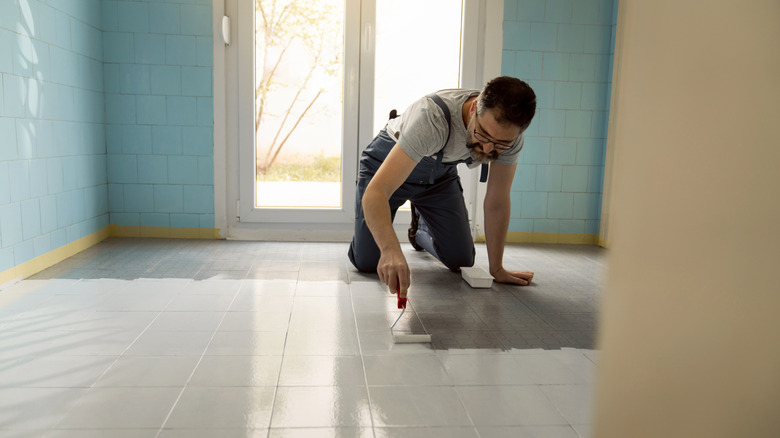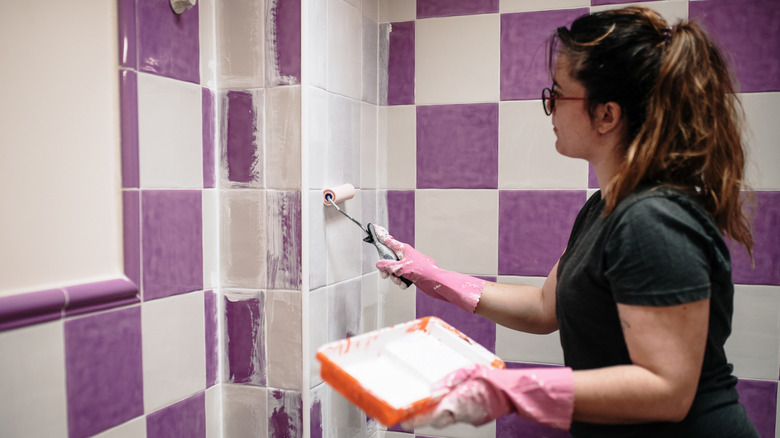Mistakes Everyone Makes When Painting Tile
Painting your existing tile is a quick and easy way to give it a new look, saving you from the cost and hassle of replacing it. While this DIY-friendly solution is straightforward enough to complete in one weekend, most homeowners tend to make the same errors when painting tile. While there are many mistakes that could be made during this upgrade, the most common ones include not thoroughly cleaning the tile before painting, not sanding down glossy tile, and not choosing the right type of paint for your surface.
While it might be difficult to learn everything you need to know before you paint tile in one day, we've compiled the details on the biggest mistakes that people make so you can ensure a smooth and flawless process. This list isn't exhaustive, but it does set a good foundation of knowledge to help even the newest DIYers transform their home on a budget.
Top tile painting mistakes
Even though coating the existing tile in a new color is one way to make the biggest change in your home with just paint, choosing the wrong type of paint can lead to an unfortunate disaster. When it comes to refreshing your tile, one size doesn't fit all. For instance, natural stone tiles should be updated with acrylic latex paint, while ceramic or porcelain tile requires either latex or epoxy paint. Using the wrong type can lead to premature wear and tear, an uneven finish, or severe chipping.
Another significant mistake everyone makes when painting tile (even though it is easily avoidable) is not properly cleaning it first. Depending on where the tile is in your home, it might have dust, dirt, food residue, or oils from your skin, making it nearly impossible to get an even coat of paint to stick. Thoroughly cleaning your tile and grout with a sanitizer or degreaser can help ensure a smooth paint job.
Finally, glossy slates like marble and glass are a type of tile that you should avoid painting, unless you're ready to put in some extra elbow grease. Their glossy, nonporous nature makes paint impossible to stick to. Without properly sanding the finish, the paint will chip and peel off significantly faster than with matte tiles, rendering your DIY project pointless. If you're determined to paint this type of tile, start by sanding down the surface with a 100-grit sandpaper to remove the top glaze layer. Once done, be sure to clean the tile of any leftover residue and sanding grit. Then you're free to prime and paint.

